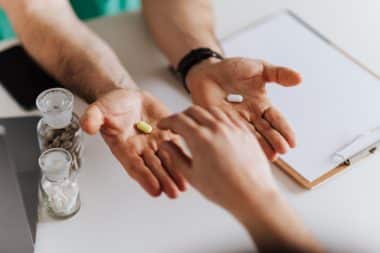Dr. Google is the most popular doctor in the world. He is always at your fingertips and he can diagnose anything, from flu to advanced cancer. You do not have to wait and he is completely free. There is only one problem: everything that Dr. Google offers is there for you to interpret, without the benefit of years of medical school. Accurate? Very doubtable. Dangerous? Possibly. Helpful? At times. But, with the increased costs of medical care, ageing population and increased number of chronic diseases such as obesity and diabetes, Dr. Google is the first, and often only, medical care people turn to or can afford. Fortunately, wireless telecommunication is offering a great assistant to Dr. Google, with a number of portable electronic monitoring devices. Together with doctors who monitor the data collected by the devices, telemedicine is promising to be the way of medical care future.
What is telemedicine?
Telemedicine can be described as a transfer of medical information or consultation on medical issues using communication media such as phone or internet. It is booming currently because it is so easy to transfer any information via high speed wireless internet, including x-rays, EEG or ECG.
Telemedicine is not new. It has been used for centuries via mail, because medical knowledge was rare and access to a doctor or hospital or any kind of diagnostic tools was very rare.
The possibilities of telemedicine today are endless. With the ubiquitous presence of communication satellites, it is possible to have consultation with a specialist at the other end of the world, or even to have a medical procedure performed in one country guided by a specialist in another. But, in its most common forms, telemedicine is becoming a mode of delivering medical care using information technology.
Telemedicine is an intrinsic part of the Affordable Care Act with its goal to “lower health care costs, guaranty more choice, and enhance the quality of care for all Americans.” Its importance in providing health care to distant and remote communities is reflected in the development of the new Healthcare Connect Fund, created by the Federal Communications Commission (FCC). The Fund is meant for expanding health care access to broadband, particularly in rural areas, as well as for the state and regional broadband health care networks creation. It is acknowledged that the access to broadband communication for health care providers can save lives while at the same time lowering the costs of health care.
Self-diagnostic devices
Small portable gadgets that monitor our life signs are a current fad, but they are also an important part of the whole system of telemedicine. The idea behind them is that a person can collect health information on a regular basis, monitor changes and at times consult a doctor. Many of the devices are connected wirelessly to a centralized system which collects and monitors data, and, if needed, alert a medical professional.
Personal health monitoring gadgets are also not new. We had personal blood glucose meters since 1962 and blood pressure cuff since 1880. What is new is the ability of the new personal devices to collect data and transfer it to a central file accessible by a physician for analysis.
According to a study by IMS Research, the sale of personal medical devices is booming and now accounts for 80 percents of all wireless devices bought in 2012. It is true that people love their gadgets, but this trend is showing something else also: people are getting ready for telemedicine.
What is available?
The number of various personal devices monitoring various vital signs is growing daily. Here is just a short list of what is currently available:
The Libri by BlueLibris does activity monitoring, voice monitoring, location, fall detection and much more. It allows people to upload various biometric measurements through the mobile health gateway, to receive reminders to take medications, upload various measurements, and receive advice based on specific health conditions.
BioHarness BT by Zephyr Technology tracks breathing and heart rate info and transmits it to a computer or some type of mobile devices. It can also monitor blood oxygen, blood pressure and ECG.
Body Motion Patch is a disposable skin-friendly patch which monitors calorie burn, number of steps taken, activity level and sleep patterns. It allows data to be uploaded to a mobile device or computer. At the moment, it is used to manage weight loss program or wellness effort, but in the future it is expected to be useful for a remote safety, care and monitoring of vital signs of elderly for a number of different health conditions.
The Zoll LifeVest is a wearable defibrillator which monitors heart of patients at risk for cardiac arrest. If a device detects a life-threatening heart rhythm, it delivers a shock in order to restore heart”s normal rhythm. It can be used for patients recovering from a heart attack, before or after a bypass surgery as well as stent placement. It can also be useful for people with cardiomyopathy or those with congestive heart failure.
Basis B1 is a wrist band with five sensors: an optical blood flow sensor, which monitors heart rate; a 3D accelerometer, which detects movements in sleep and during waking hours; a sensor which monitors body temperature during activity in order to measure exertion; a sensor which monitors an ambient temperature used to compare it to the temperature of the body in order to boost the caloric burn; and a sensor for a galvanic skin response, which measures the sweat output.
FuelBand by Nike is a wristband designed to monitor fitness efforts. It monitors and displays time, calories, steps, and the user’s physical activity measure called “NikeFuel” which is defined as a normalized score regardless of person’s physical characteristics. The device can also display a number of burnt calories. The wrist band can record the data every day and track user’s progress via a mobile wireless device.
Fitbit Ultra is another fitness monitoring device which tracks steps, distance, sleep, and calories burned. The data is uploaded automatically to a wireless device and transferred to a user”s page on Fitbit’s site. The site has online tools which monitor user’s progress.
The BioMan t-shirt by AiQ has “smart sleeves” which measure heart rate, skin temperature and respiration rate. It can be customized to also measure skin moisture and EKG and electroencephalography (EEG) signals, as well as electromyography (EMG) signals. AiQ has other “smart” garments such as jackets and vests. The SolarMan vest even has built-in solar panels for recharging the device.
BodyTel products include combined blood pressure meter, a blood glucose meter and scales. A built-in Bluetooth automatically sends all readings to the person’s home device or smart phone. One option offers a special alert sent to a doctor if data goes above or below a previously determined threshold. This allows quick medical help in the event of hypoglycemia or hyperglycemia if a person has diabetes.
Imec produced a wearable EEG (electroencephalography) headset and EKG patch. They monitor your brain and heart activity. The heart rate and 3D-accelerometer data are sent to a smart phone.
Nuubo is a new-generation remote wireless cardiac monitoring system. It is based on a wireless ECG monitoring platform. It can be used to monitor athlete”s heart rate, or a heart rate of people with a heart condition.
Many of the devices are still in the development stage, but the potentials are obvious, especially for people with chronic health conditions. The ability to send collected information to a doctor increases a chance that the changes for the worse will be detected in time. Some devices are designed to alert doctors when the data shows a potential danger, enabling doctors or nurses to react in time and prevent complications or a serious situation.
While portable self-diagnostic devices can be of great use to people with chronic conditions, they are most useful if they are connected to a qualified medical professional. Self-diagnosing based on what the gadget says, without having the knowledge to analyze data can be very dangerous. If you love gadgets and cannot resist having them around, go right ahead, but talk to your doctor. Find out what is the best way to use the information your gadget provides. Your doctor might be part of the network of physicians who are available online and who are willing to monitor your health information collected by the gadgets you have. But, don”t complain if the data your doctor can see from your gadgets force him to put you on an even stricter diet or on an increased exercise regime. Machines do not lie.









